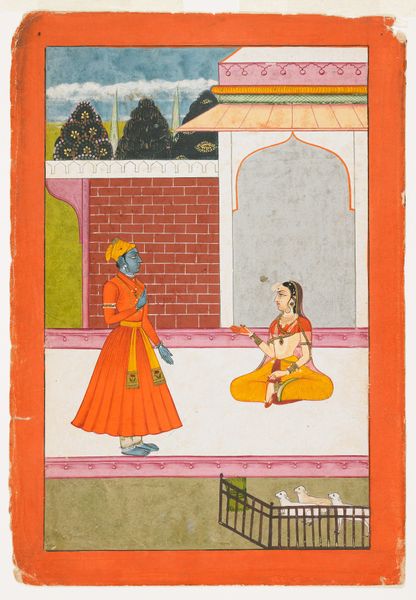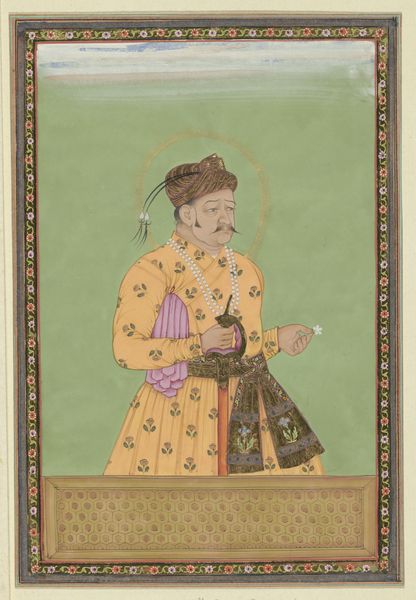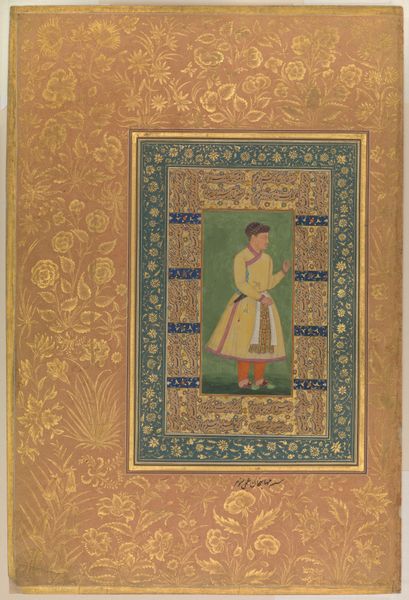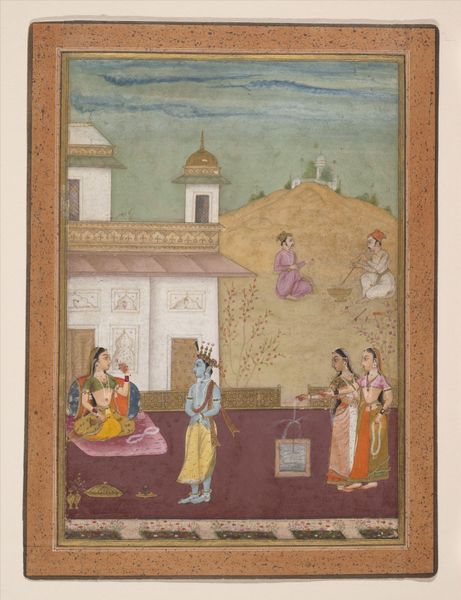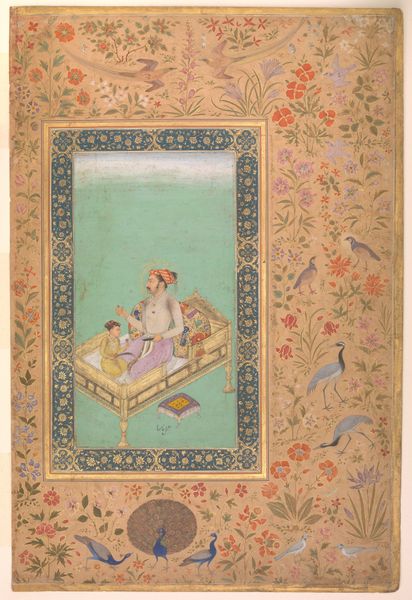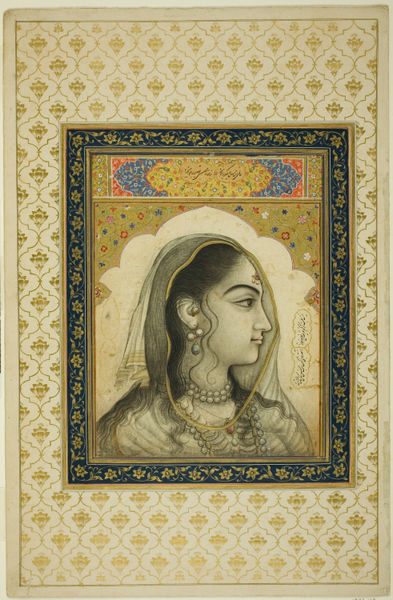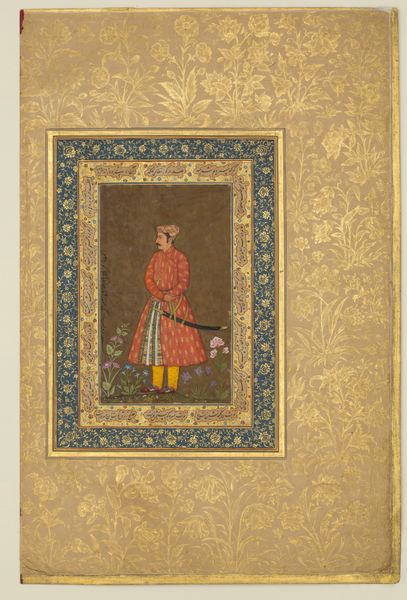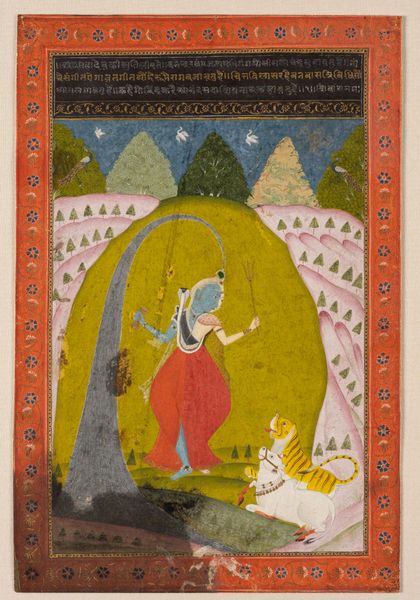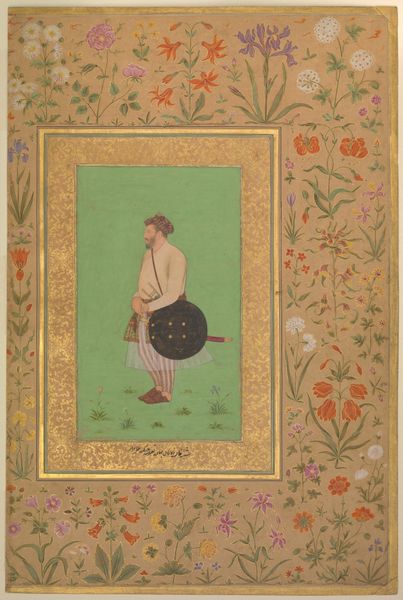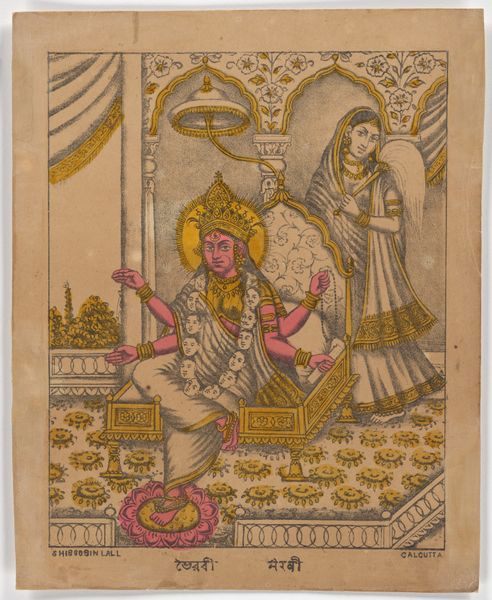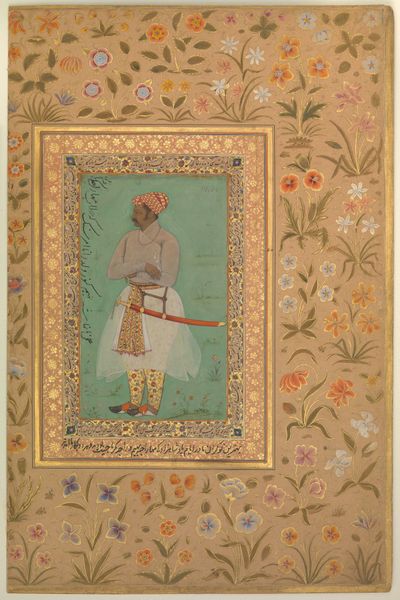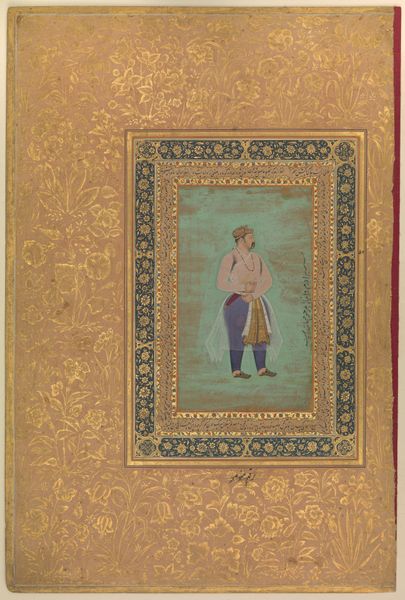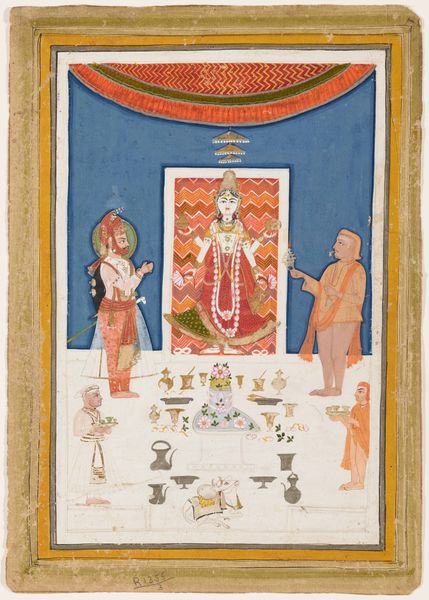
painting, paper, watercolor, ink
#
portrait
#
water colours
#
painting
#
asian-art
#
paper
#
watercolor
#
ink
#
miniature
Dimensions: Image: 15.4 × 8.6 cm (6 1/6 × 3 3/8 in.); Outermost border: 19.1 × 12. 2 cm (7 1/2 × 4 13/16 in.); Paper: 27.6 × 17 cm ( 10 7/8 × 6 11/16 in.)
Copyright: Public Domain
Editor: Here we have "Beauty Holding a Flower," a Mughal miniature executed around the mid-17th century using ink, watercolor, and watercolours on paper. I'm immediately struck by the contrast between the intricate detailing of the figure's garments and jewelry, versus the relative simplicity of the background. What stylistic elements define this portrait in your view? Curator: Notice the use of line—it's remarkably delicate and precise. The artist employs a fine brush to delineate the contours of the figure, creating a sense of refinement and elegance. Consider the background, not as "simple" but as a crucial formal element. The flatness of the aqua background and soft ground serves to accentuate the dimensionality of the figure, throwing the textural richness of the beauty into higher relief. The composition achieves a dynamic tension between these planar areas and the fully realized figure. Editor: That makes sense. So, you're saying the apparent simplicity is actually a calculated artistic decision? Curator: Precisely. Observe also the limited palette. Soft pinks, blues, and golds work in harmony. The artist has restricted the colors to enhance the overall effect of serenity and idealized beauty, indicative of a courtly aesthetic that often suppressed individualism in favour of idealized forms and standardized types. Are you familiar with Panofsky's notion of iconographic analysis? Editor: Vaguely. It’s about interpreting symbolism, right? But here, isn't the formal arrangement itself the message? Curator: In part. The carefully constructed visual space embodies cultural ideals concerning beauty, grace, and status, and through a deep dive into visual components, such as line, form, and composition, a better, nuanced understanding of these courtly standards come to the fore. The placement of the figure in the visual plane creates hierarchy which, as we've noted, underscores status and artistic skill. Editor: That's a fascinating way to think about it. I’ll never see “simple backgrounds” the same way again! Curator: Indeed. The relationship between form and meaning is what truly brings art to life.
Comments
No comments
Be the first to comment and join the conversation on the ultimate creative platform.
